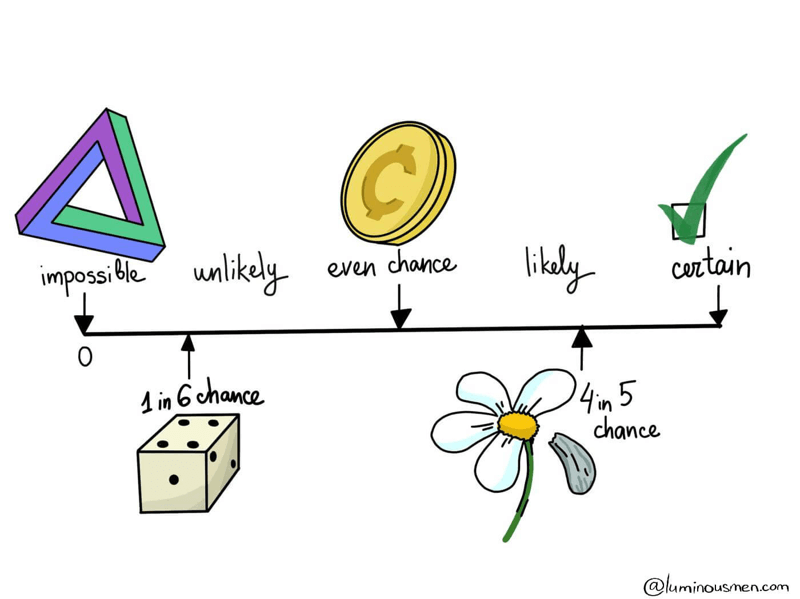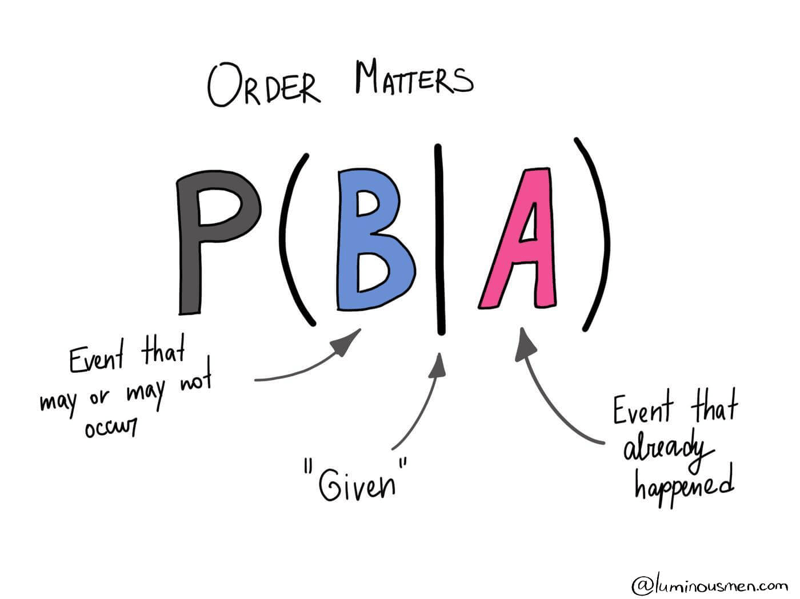There are a lot of engineers who have never been involved in statistics or data science. So, to build a data science pipelines or rewrite produced by data scientists code to an adequate, easily maintained code many nuances and misunderstandings arise from the engineering side. For these Data/ML engineers and novice data scientists, I make this series of articles. I'll try to explain some basic approaches in plain English and, based on them, explain some of the Data Science model concepts.
The whole series:
- Data Science. Probability
- Data Science. Bayes theorem
- Data Science. Probability distributions
- Data Science. Measures
- Data Science. Correlation
- Data Science. The Central Limit Theorem and sampling
- Demystifying hypothesis testing
True logic of this world lies in the calculus of probabilities — James Clerk Maxwell
Data science often uses statistical inferences to predict or analyze trends from data, while statistical inferences use probability distributions of data. Hence knowing probability and its applications are important to work effectively on data science problems.
Events. Probabilities of events
One of the basic concepts in statistics is an event. Events are simply results of some experiments. Events can be certain, impossible and random.
A certain event is an event that as a result of an experiment (the execution of certain actions, a certain set of conditions) will necessarily occur. For example, a tossed coin will certainly fall.
Impossible event — an event, as the name implies, will not occur as a result of the experiment. For example, a tossed coin will fly in the sky.
And finally, an event is called a random event, if the event may or may not occur as a result of the experiment. In such an experiment should present fundamental criteria of randomness: a random event is a consequence of random factors whose influence cannot be predicted or it is extremely difficult. For example, as a result of a coin toss, tails will fall out. In this case, random factors are the shape and physical characteristics of the coin, the strength/direction of the throw, air resistance, etc.

Let us consider in more detail the flip of a coin (meaning a fair coin — a coin in which both results ("heads and tails") are equally likely). There are 2 mutually exclusive outcomes: heads or tails. The outcome of the flip is random since the observer cannot analyze and take into account all the factors that influence the result. What is the probability of heads? Most answer ½, but why?
Let's denote A as the event that came up tails. Let the coin be thrown n times. Then the probability of the event A can be defined as:
The probability of an event happening = number of ways it can happen/Total number of outcomes
The ratio is called the frequency of event A in a long series of tests.
Example: there are 4 Kings in a deck of 52 cards. What is the probability of picking a King?
Number of ways it can happen: 4 (there are 4 Kings)
Total number of outcomes: 52 (there are 52 cards in total)
So the probability = 4/52 = 1/13
It turns out that in various test series the corresponding frequency for large n is fluctuating around a constant value P(A). This value is called the probability of event A and is denoted by the letter P — an abbreviation for probability.
The probability lies in the range [0, 1], where, in general, 0 indicates the impossibility of the event, and 1 indicates certainty. The higher the probability of an event, the greater the likelihood that an event will occur.
Example: What is the probability of drawing a Jack or a Queen from a well-shuffled deck of 52 cards?
If we have 4 Jack and 4 Queen cards, the probability is simply the sum of the individual probabilities.
Number of ways it can happen: 4 (there are 4 Jacks) and 4 (there are 4 Queens) = 8
Total number of outcomes: 52 (there are 52 cards in total)
So the P(Jack or Queen) = 8/52 = 2/13
Dependent/Independent/Disjoint Events
Two random events A and B are called independent if the occurrence of one of them does not change the probability of the occurrence of the other. Otherwise, events A and B are called dependent.
Knowing that the coin landed on a head on the first toss, does not provide any useful information for determining what the coin will land on in the second toss. The probability of a head or a tail on the second toss is 1/2, regardless of the outcome of the first toss. Probabilities of independent events can be multiplied to get the total probability of the occurrence of all of them.
Example: What are the chances of getting heads 3 times in a row?
Let's define possible outcomes of 3 coin tosses(H - heads, T - tails):
HHH, HHT, HTH, THH, TTH, THT, HTT, TTT
Number of ways it can happen: 1
Total number of outcomes: 8
So, the answer is 1/8. However, we know that the results of a coin toss are independent and we can multiply them to get the total probability: P(3x heads) = P(heads)P(heads)P(heads) = 1/2 * 1/2 * 1/2 = 1/8
On the other hand, knowing that the first card drawn from a deck is an ACE does provide useful information for calculating the probabilities of outcomes in the second draw. So, the probability of drawing yet another ACE is going to be 3 over 51, instead of 4 over 52.
Disjoint Events cannot happen at the same time. A synonym for this term is mutually exclusive.
For example, the outcome of a single coin toss cannot be a head and a tail, it can be either head or tails.
The non-disjoint event can happen at the same time. Therefore they can overlap, and the probability of overlapping should be excluded from total probability to avoid double counting.
Example: What is the probability of drawing a Jack or a Red card from a well-shuffled deck of 52 cards?
Several ways it can happen: 4 (there are 4 Jacks) and 26 (there are 26 Red cards). But there are 2 Red cards overlap between them. Two red jacks that fit both criteria.
Total number of outcomes: 52 (there are 52 cards in total)
So, P(Jack or Red card) = P(Jack) + P(Red card) - P(Jack and Red card) = 4/52 + 26/52 - 2/52 = 7/13
Types of probabilities

Joint Probability is a probability of more than one event occurring simultaneously. The joint probability is the probability that event A will occur at the same time as event B.
For example, from a deck of 52 cards, the total probability of receiving a red card and 6 is P(6 ∩ red) = 2/52 = 1/26, since there are two red sixes in the deck of cards — six hearts and six diamonds. You can also use the formula to calculate the total probability — P(6 ∩ red) = P(6)P(red) = 4/52 * 26/52 = 1/26.
The symbol "∩" in joint probability is an intersection. The probability of occurrence of an event A and an event B is the same as the intersection of A and B. Therefore, the joint probability is also called the intersection of two or more events. Venn Diagram is perhaps the best visual tool to explain.
Marginal Probability — a probability of any single event occurring unconditioned on any other events.
Whenever someone asks you whether the weather is going to be rainy or sunny today(without any conditional or prior information), you are computing a marginal probability.

Conditional probability — is a measure of the probability of an event (some particular situation occurring) given that (by assumption, presumption, assertion or evidence) another event has occurred. When I ask you what is the probability that today will be rainy or sunny given that I noticed the temperature is going to be above 80 degrees, you are computing a conditional probability. There is a specific notation for conditional probability, it is shown in the image above.
So, we want to understand the probability of event B given A. To get the probability of event B occurred we should divide all events that lead to event B by all possible events. In this situation, event A has occurred, so the event that leads to event B are A∩B and all possible events are B + A ∩ B. Thus,
$$ P(B|A) = \frac{P(A ∩ B)}{P(B + A ∩ B)} $$
Example: A math teacher gave her class two tests. 25% of the class passed both tests and 42% of the class passed the first test. What percent of those who passed the first test also passed the second test?
P(Second|First) = P(First and Second) / P(First) = 0.25/0.42 = 0.60 = 60%
Conclusion
In this post, we got acquainted with the basic concepts of probability and probability algebra. In the next post, we will talk about the Bayes theorem and look at the world through the eyes of Bayes.
